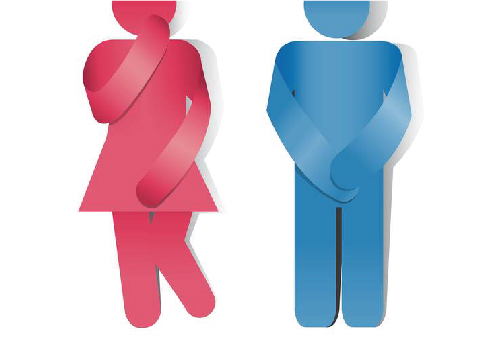Regain your Happiness and say Goodbye to Urinary Incontinence
As we age, physical challenges and changes are inevitable. For women, it is not only about wrinkles or a sagging complexion that becomes a severe problem. Women may face more serious issues such as stress incontinence where a flaccid pelvic floor muscle or loose cervix may cause incontinence when coughing, sneezing, exercise or just moving.

Pregnancy and childbirth can stretch and weaken a woman’s pelvic floor muscles. Other things that can lead to stress incontinence are being overweight or obese, taking certain medications.
Other types of incontinence according to Wedmd.com

Urge Incontinence
This is also called overactive bladder. With this type, you have an urgent need to go to the bathroom and may not get there in time.
Causes of overactive bladder include:
- Aging
- Damage to muscles
- Damage to the bladder's nerves
- Damage to other parts of the nervous system
Conditions that may cause the above are as follows:
- multiple sclerosis
- Parkinson's disease
- diabetes
- stroke can affect nerves, leading to urge incontinence
- Bladder problems, such as infections and bladder stones
- certain medications
Overflow Incontinence
Overflow incontinence occurs when one has problem emptying the bladder.
Causes include:
- Weak bladder muscles
- Nerve damage
- Conditions that block the flow of urine, such as tumors or an enlarged prostate
- Constipation
- Certain medications
If not treated, it can lead to infections and other problems.
Functional Incontinence
Unable to get to the toilet on time due to mental or physical problems such as dementia or arthritis.
Treatment options
In the past, there are other treatment options to rectified this issue such as follows:
- Surgery or repairs
- Electrical stimulation
- Botox injections in the cervix
However, the above is normally not the solution of choice especially for women who are embarrassed to get treatment or go through an operation.
The integrative treatment alternative
We at Absolute Health, highly recommend the latest innovation known as High-Intensity Focus Electro Magnetic Chair (HIFEM), from the United Kingdom. It has the ability to help firm up that pelvic muscle and rectify urinary incontinence issue. In addition, it can also strengthen the pelvic floor muscle which in turns increases the sexual function for ladies. Hence, it is also dubbed as “the chair of happiness”.
A new experience in the treatment of urinary incontinence
- Patients remain fully clothed
- No sexual abstinence
- Non-invasive
- Walk-in walk-out procedure
- Each session takes only 30 minutes

While seated in a comfortable position, the chair sends HIFEM pulses to the pelvic floor muscle to constrict and control the nerves of the muscle. Each session takings about 30 minutes. Patients will experience contraction of the pelvic floor muscle. The treatment regime does not disrupt any daily routine as patient can carry on with his or her normal activities. Results have proven that patients’ incontinence will dramatically improve and at the same time regained confidence for a better quality of life.
How many sessions of treatment are required, and how long do they take?
Usually, the treatment session takes 30 minutes, with 6 sessions in total. Patient are normally advice to do 2 sessions per week.
Who is suitable for this treatment?
This treatment is commonly for women who want to rectify their urinary incontinence issue and improve the quality of life.
This treatment is highly recommended for women with menopause or post-childbirth as they are frequently faced with incontinence problem due to the weakening of the pelvic floor muscle.
When are the results seen?
Research studies have found that 95% of patients had noticeable improvements upon commencing treatment. Patients will notice improvements from the first session and within weeks, incontinence symptoms will dramatically improve. Therefore, do not hesitate and seek treatment now to improve your quality of life.





Sign In
Create New Account